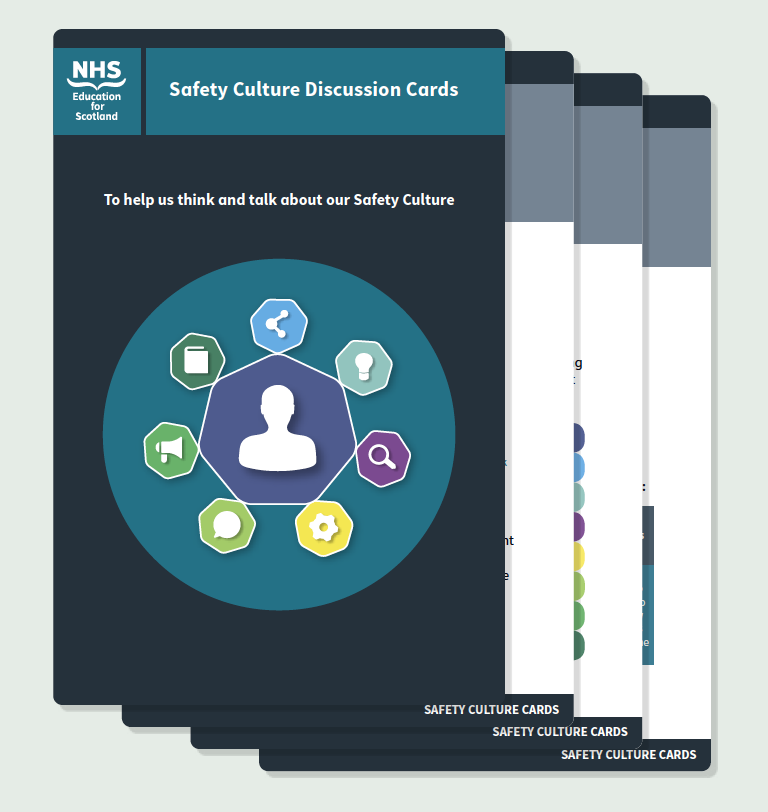Safety culture discussion cards
SAFETY CULTURE DISCUSSION CARDS: A LEARNING TOOL FOR CARE TEAMS AND EDUCATORS

About Safety Culture
To help care practitioners and educators improve organisational performance and human well-being, there needs to be a focus on the cultural context of work in health and social care. Much can be learned from other high-risk industries on how safety culture is valued and prioritised by frontline staff groups, managers and leaders as well as educators, regulators and policymakers.
Defining a concept such as safety culture in a way that is satisfactory to everyone is challenging and is unsurprisingly the subject of much academic debate. For James Reason, the meaning of safety culture ‘…has all the definitional precision of a cloud’, while for Ken Catchpole, ‘… the idea of “culture” is perhaps similar to that of “intelligence” – everyone thinks they know what it is, but conceptual clarity is more elusive’.
While there are many definitions of safety culture, most emphasise shared assumptions, values, beliefs and patterns of behaviour concerning safety in the health and social care workplaces. There is often confusion over the difference between the terms ‘safety culture’ and ‘safety climate’. Both are inextricably linked and used interchangeably, but they are different concepts. Safety culture can be ‘viewed as an enduring characteristic of an organisation’ whereas safety climate can be thought of as a ‘temporary state of an organisation that is subject to change’. One way to think about it is that climate might be said to be more akin to the mood of a team or organisation, while culture is more akin to its personality.
SAFETY CULTURE DISCUSSION CARDS: A LEARNING TOOL FOR CARE TEAMS AND EDUCATORS
